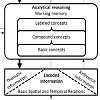Insight provenance for spatiotemporal visual analytics: Theory, review, and guidelines
Keywords:
visual analytics, provenance, spatio-temporal, cognition, reasoning, visualization, framework, guidelines, reviewAbstract
Research on provenance, which focuses on different ways to describe and record the history of changes and advances made throughout an analysis process, is an integral part of visual analytics. This paper focuses on providing the provenance of insight and rationale through visualizations while emphasizing, first, that this entails a profound understanding of human cognition and reasoning and that, second, the special nature of spatiotemporal data needs to be acknowledged in this process. A recently proposed human reasoning framework for spatiotemporal analysis, and four guidelines for the creation of visualizations that provide the provenance of insight and rationale published in relation to that framework, work as a starting point for this paper. While these guidelines are quite abstract, this paper set out to create a set of more concrete guidelines. On the basis of a review of available provenance solutions, this paper identifies a set of key features that are of relevance when providing the provenance of insight and rationale and, on the basis of these features, produces a new set of complementary guidelines that are more practically oriented than the original ones. Together, these two sets of guidelines provide both a theoretical and practical approach to the problem of providing the provenance of insight and rationale. Providing these kinds of guidelines represents a new approach in provenance research.

Downloads
Published
Issue
Section
License
Copyright (c) 2017 Andreas Hall, Paula Ahonen-Rainio, Kirsi Virrantaus

This work is licensed under a Creative Commons Attribution 4.0 International License.
Articles in JOSIS are licensed under a Creative Commons Attribution 3.0 License.
